Being one of the most popular TRPGs in Japan, Call of Cthulhu has a plethora of official and unofficial supplements. Given its popularity, it’s about time we take a look at one of them. Entitled Our Lady of Kanzashi (かんざしの聖母【マリア】) it is a scenario book for Call of Cthulhu.
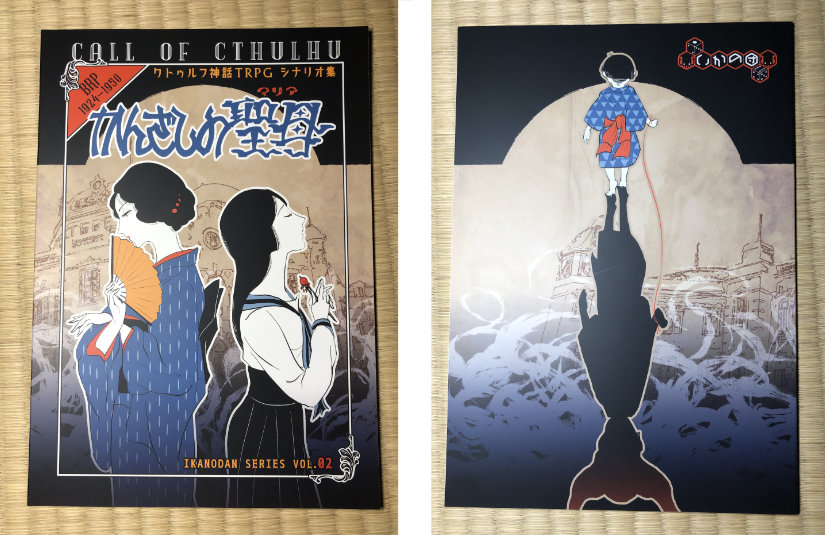
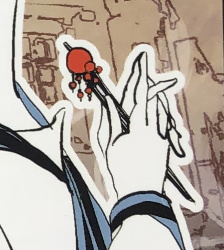 Containing three scenarios ranging between 1924 and 1950, its cover channels the Taisho and early Showa era aesthetic. Kanzashi, which the girl on the right is holding and involves the third scenario, is an ornate hairpin that comes in a variety of styles.
Containing three scenarios ranging between 1924 and 1950, its cover channels the Taisho and early Showa era aesthetic. Kanzashi, which the girl on the right is holding and involves the third scenario, is an ornate hairpin that comes in a variety of styles.
We’ll take a brief detour and discuss the aesthetic of the cover and the period it references. The first scenario takes place in 1924, two years before the end of Taisho, and the last scenario in 1928, two years after the end.
Taisho Romanticism
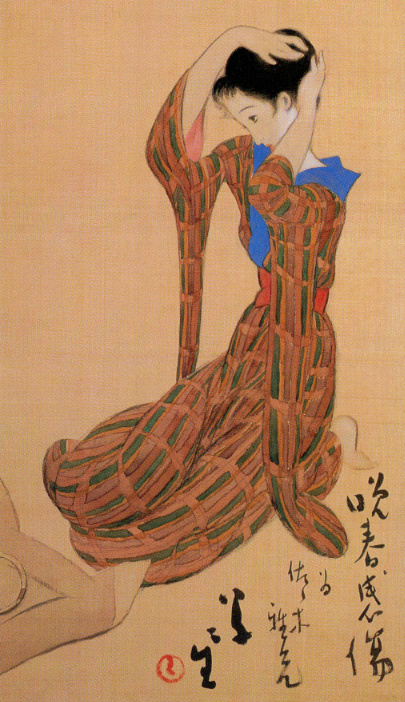
Regardless of genre, the Taisho Era is an ever popular period. There’s a term Taisho Romanticism (大正ロマン) that is used to describe the period and places that embody its ambiance. Taisho was a period of prosperity and cultural exchange− a mix of east and west, with people in Japanese and Western clothes mingling in the street.
There’s a sense of an artistic renaissance, with many famous artists and writers, such as the poet Yosano Akiko, working during this period. Asking friends about the era and why it is popular for scenarios, they said it’s because of the possibilities that a mix of everything, new and old, east and west, provides. In terms of style, a lot of the fashion wouldn’t be out of place if worn today. Showing the cover to my wife, she remarked that it appears to be a homage to Yumeji Takehisa (竹久夢二).
The Physical
The book is the commonly used JIS B5 (182mm × 257mm) in size, and twenty-eight pages long. Its beautiful cover wraps a black and white interior that contains a few maps and drawings, but is mainly text. The main font is easy to read, with a wavy version used for speech.

The Scenarios
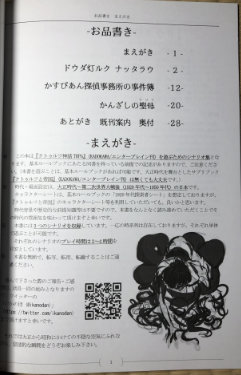
Each scenario begins with a summary at the top of the page, followed by an introduction. NPCs and then scenes follow that. I haven’t run any CoC scenarios, so it may in fact be common, but I found the focus on characters and background interesting. While it could be a lack of experience with pre-made scenarios, it feels like other systems place the story structure before details on the NPC backgrounds.
The summary block for the third scenario:
Expected play time: 3~4 hours Expected number of PCs: 1-5 Difficulty: Simple Time Period: 1928 (Showa 2) Scenario Type: Information gathering Recommended Skills: Lock-picking PC Creation Advice: Think about their relation with Isoji Kirishima, one of the NPCs.
The scenarios themselves do have a chronological order, but can be played standalone. The titular scenario comes last in the book, and was an interesting read, taking place at a school built upon storied land. The writing itself is clear, but I found a number of words I wasn’t familiar with that were used to create a certain atmosphere.
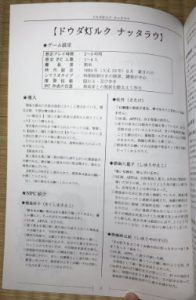 The first scenario begins in Asakusa in 1924 where the scars of the 1923 Great Kanto Earthquake still linger. A request from a young woman Saeko Kikushima to save her sister, “Please, bring my sister home from the clutches of that repugnant man. My sweet and gentle, only sister.” She hasn’t heard from her sister, who moved to northern Ibaraki, since the earthquake, and there are also rumors afloat of young people disappearing. What follows is a race against the clock investigation of the village Senjoumura.
The first scenario begins in Asakusa in 1924 where the scars of the 1923 Great Kanto Earthquake still linger. A request from a young woman Saeko Kikushima to save her sister, “Please, bring my sister home from the clutches of that repugnant man. My sweet and gentle, only sister.” She hasn’t heard from her sister, who moved to northern Ibaraki, since the earthquake, and there are also rumors afloat of young people disappearing. What follows is a race against the clock investigation of the village Senjoumura.
The second scenario also begins in Asakusa, but this time in 1950. In the squalid alleys of Asakusa lies a small sign the reads “Caspian Detective Agency.” Run by Haruhito Sakuragawa, who is friends with Saeko Kikushima’s (from the first scenario) nephew. Close in age, he sees Saeko’s nephew as a younger brother and is aware of the occult. A knock on the door brings a case that breaks the monotony of missing animal cases and investigating cheating partners. A teacher from Senjou Girl’s School has come to seek help searching for a missing student. “I’ve heard that this agency will investigate anything. Am I mistaken?”
The final scenario goes back to 1928 and this time begins with a relative of the Kikushima family. While drinking with Isoji Kirishima, they hear of a white kanzashi and a statue of Maria. They are soon drawn into its tale when he suddenly shouts out and goes catatonic, his soul drawn from his body.
Without giving away too much, all three scenarios involve the Cthulhu mythos in one way or another. Re-reading led to a lot of connections between the scenarios that I at first missed, and I enjoyed the setting.
Other Endeavors
The group Ikanodan published this collection and has several other publications to their name. Additionally, they have live and recorded streams of various games, including Kamigakari, NoviNovi TRPG, and Call of Cthulhu. Of the videos I watched, the camera was always on the table, not the players. Check it out if you’re interested in listening to TRPGs in Japanese.
I picked up my copy at Tokyo Game Market, but Kanzashi Maria is available at Yellow Submarine.


Again, amazing stuff I wouldn’t know if not for this blog! I absolutely LOVE the 1920-1940 era fashion. So this game is totally something I’d be into playing should I finally learn enough Japanese. hehe.
But how does it relates to Call of Cthulhu? It only uses the TRPG system or does Cthulhu mythos have a part in the story?
Great question! Was trying to avoid “spoilers”, but I went a bit too light on details. Will add some more info to the post, but in the meanwhile: it’s definitely set in the Cthulhu mythos, with at least two direct references to mythos creatures. The setting is Japan, but it maintains the investigative horror of CoC. As always, thanks for reading and your comments 🙂
Your comment inspired me, and I was able to add more details quicker than I thought. It’s not a lot, but hopefully sheds some more light on the scenarios. The new content is under the “Scenarios” section. Thanks again!
Thanks for the update! Man, I would love to go on the supernatural jumpin jive and live a late 20’s adventure in Japan! And in the second scenario (in the 50’s) my character theme music would definitly be “家へおいでよ”.
Again thanks for the post I’ll keep an eye on this Our Lady of Kanzashi scenario. It really sounds inspiring.
Sorry for the late reply! A supernatural jumpin jive sounds amazing, and now 家へおいでよ is stuck in my head 😀 Thanks as always for the kind words!
Not to worry! Unfortunately I didn’t get the e-mail for this reply when you posted… I saw it later. I’m curious as to which version of 家へおいでよ you did hear.
Hmm, I don’t remember the name of the performer, but seemed like a recent cover. Is there a specific version you like?
I think you heard Umekichi’s version. As for me, I knew the original version, which is in English, by Rosemary Clooney.
But one day I found out that Eartha Kitt♥ sang the song in Japanese…
Looking into that lead me to find out about many Japanese singers of the early and mid 20th century. So I don’t really have a favourite, I think they’re all great!
I just had a field day listening to different versions, thanks! I had no clue that Eartha Kitt sang it, too.